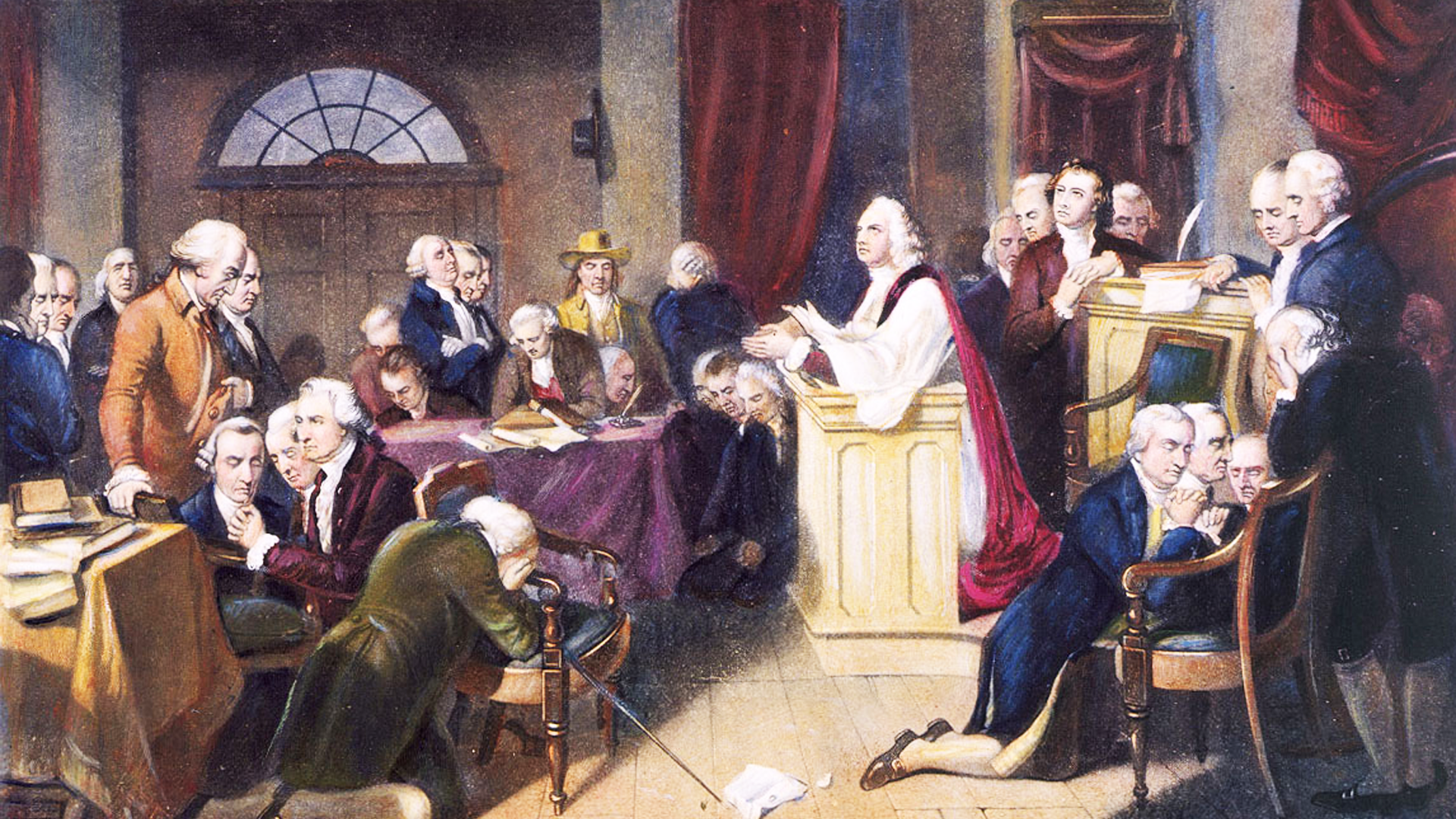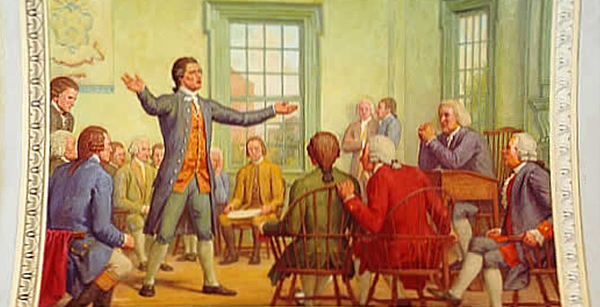The First Continental Congress Convenes

The First Continental Congress met in Carpenters’ Hall, Philadelphia, in response to the Coercive Acts.
What Happened?
The First Continental Congress was called after Parliament passed the Coercive Acts, known in America as the 'Intolerable Acts.' These laws punished Massachusetts for the Boston Tea Party by closing its port, placing it under military rule, and forcing colonists to house British troops.
On September 5, 1774, delegates from 12 colonies gathered at Carpenters’ Hall in Philadelphia. Only Georgia, fearing attacks from neighboring Native nations, did not send representatives. The roster included some of the most prominent colonial leaders, from Samuel Adams to George Washington.
The Congress quickly endorsed the Suffolk Resolves from Massachusetts, which called on citizens to refuse obedience to the Intolerable Acts, boycott British goods, and prepare militias. This defiant step showed how far the colonies had moved toward open resistance.
One of the body’s central achievements was the creation of the Continental Association, an organized boycott of British imports beginning in December 1774, and of exports to Britain beginning in 1775. Committees of inspection were established in towns across the colonies to enforce compliance.
Debates were fierce. Some delegates, like Joseph Galloway, pushed for compromise with Britain through his 'Plan of Union,' but the majority rejected half measures. Instead, they drafted a Declaration of Rights and Grievances, affirming the colonists’ right to self-government and denouncing taxation without representation.
Perhaps the most fateful decision came at the end: to reconvene if Britain did not change course. The call for a Second Continental Congress ensured that the colonies would act together in the event of continued conflict—a unity that soon proved essential.
Though not yet a call for independence, the First Continental Congress marked a decisive step. It transformed colonial discontent into coordinated action and showed that America’s path toward revolution was already being paved.
Why It Matters
The First Continental Congress was more than a meeting—it was the birth of colonial unity. For the first time, delegates from nearly every colony coordinated resistance, declared common rights, and prepared to act collectively against imperial power. While independence was not yet declared, the Congress created the infrastructure of American resistance and set the stage for revolution. It proved that a people divided by region and interest could still find common cause in liberty.
?
What were the Intolerable Acts, and why did they push the colonies toward unified resistance?
Why did Georgia not participate in the First Continental Congress, and how might its absence have affected the meeting?
How did the Suffolk Resolves reflect the radical mood of Massachusetts, and why did Congress endorse them?
What was the Continental Association, and how did local enforcement shape colonial communities?
How did the decision to reconvene create continuity and momentum toward independence?
Dig Deeper
Overview of the First Continental Congress and how colonists organized resistance to British policies.
John Green traces how taxes, acts of Parliament, and colonial protests set the stage for revolution and the Continental Congress.
Related

The Role of Ideas in Revolutionary Change
The Role of Ideas in Revolutionary Change: How can ideas and writings change the course of history?

Who Was Molly Pitcher? Unpacking the Legend, the Facts, and the Firepower
Was she a single fearless woman, or the name shouted when soldiers needed water? The truth is more complicated—and more powerful. Meet the women behind the legend of Molly Pitcher.

Halifax Resolves and the Road to Revolution
How North Carolina went from protest to the first official call for full independence from Britain.
Further Reading
Stay curious!
